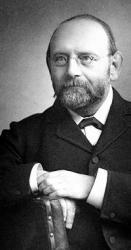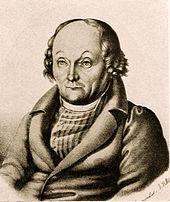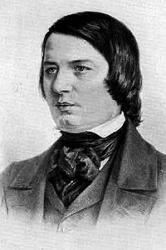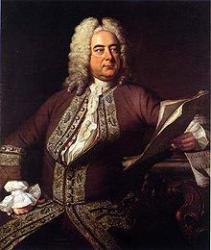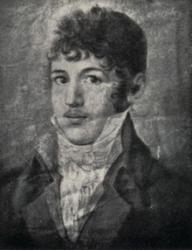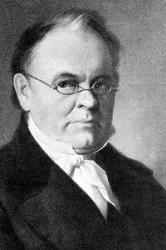
1798 - 1864 Person Name: Albert Knapp, 1798-1864 Translator of "It Is Not Death to Die" in Hymnal and Liturgies of the Moravian Church Knapp, Albert, was born July 25, 1798, at Tübingen, where his father (1800, Oberamtmann at Alpirsbach in the Black Forest, and 1809, Oberamtmann at Rottweil) was then advocate at the Court of Appeal. In the autumn of 1814 he entered the Theological Seminary at Maulbronn, and in 1816 the Theological College at Tübingen, where he also graduated M.A. at the University. In November, 1820, he became assistant clergyman at Feuerbach, near Stuttgart; and in July, 1821, at Gaisburg, near Stuttgart. He was appointed, in Feb., 1825, diaconus (Heifer) at Sulz on the Neckar, and also pastor of the neighbouring village of Holzhausen; in June, 1831, archidiaconus at Kirchheim-unter-Teck, along with Bahnmaier (q.v.); in May, 1836, diaconus of the Hospitalkirche in Stuttgart ; and in October, 1837, archidiaconus of the Stiftskirche. He was finally appointed, in December, 1845, Stadtpfarrer at St. Leonhard's Church in Stuttgart, where, after having been for some time partially disabled by paralysis, he preached his last sermon, Feb. 13, 1863. He died at Stuttgart, June 18, 1864 (Koch, vii. 213; Allgemeine Deutsche Biographie xvi. 263, &c).
Knapp as a Poet possessed not merely very considerable talent, but also natural originality. He was preeminently a lyric poet; the best of his secular poems being those which celebrate the history and the scenery of his beloved Swabia. His poems are characterised by rich play of fancy, wealth of ideas and of figures, masterly word-painting, capacity of feeling, ease of expression, and sonorous and musical rhythm. Unfortunately the very flow of his imagination betrayed him, for the greatest fault of his poems is that they are at once too numerous and too long (and it must be added sometimes too rhetorical and too eager to point a moral); what was easy writing becomes hard reading.
As a Hymn-writer, among the recent hymn-writers of Germany, Knapp holds a high place, perhaps we might say the highest of all. To his hymn-writing he brought his powers as a poet, and the depth of his nature as an earnest and sincere disciple of Jesus Christ. In his hymns his aim was to make known the fulness of the grace of God, and to reveal the wealth and depth of Holy Scripture, and the love of God to all mankind. Their earnestness, their experimental Christianity, their Scripturalness and their beauty of form have gained for many of them a place in all recent German hymn-books. They have somewhat unaccountably been neglected by English translators. It is certainly surprising that in the Hymns from the Land of Luther not one version from Knapp finds a place. While all the hymns of Spitta's Psalter und Harfe have passed into English, and many of them in half a dozen different versions, comparatively few of Knapp's hymns have been translated, though they rank much higher as poetry, and are more suited for Church use than those by Spitta.
As a Hymnologist Knapp did good service by his Christoterpe [complete set in Berlin], an annual which he edited from 1833 to 1853, in which many of his own pieces appeared, and also many of the best poems and, hymns of Hey, Meta Heusser-Schweizer, and various others. He was also the compiler of the Evangelischer Lieder-Schatz (frequently referred to in this Dictionary as Knapp's Evangelischer Lieder-Schatz), the most elaborate German hymnbook of recent times. Of this the first edition, with 3590 hymns, appeared at Stuttgart in 1837, and a Supplement entitled Christenlieder, 1841, added 250 more. In his second edition, 1850 (3067 hymns) he omitted many of the third-rate hymns of his first edition, added many of a higher class, and gave the hymns more nearly (but by no means exactly) as the authors wrote them. The third edition, 1865 (3130 hymns, concluded by his son), was further im¬proved, and the notices of the authors of the hymns were revised and enlarged. As a comprehensive collection with a specially full representation of good modern hymns it has no rival in German. He was also one of the editors of the Württemberg Gesang-Buch of 1842. The editions which he prepared of the Hymns of Gottfried Arnold (1845) and N. L. von Zinzendorf (1845) are of interest, but he took most unwarrantable liberties with the originals; many pieces being not merely abridged but rewritten "to suit the requirements of the 19th century."
Knapp's original hymns appeared principally in his Christoterpe and Evangelischer Lieder-Schatz, as above; and also in his
(1) Christliche Gedichte, 2 vols., Basel, 1829. (2) Neuere Gedichte, 2 yols., Basel, 1834, some¬times ranked as vols. iii., iv. of No. 1. (3) Gedichte, Neueste Folge, Stuttgart, 1843. (4) Herbstblüthen, Stuttgart, 1859. Those which have passed into English common use are:—
i. Aus deiner Eltern Armen. Holy Baptism. This and No. iv. seem to have been written for the baptism of his own children. First published in his Christoterpe, 1850, p. 222, in 3 st. of 8 1., entitled "Baptismal Hymn," and repeated in his Evangelischer Lieder-Schatz, 1850, No. 846 (1865, No. 875). The translation in common use is
Thy parent's arms now yield thee. In the original metre by Miss Winkworth in her Lyra Germanica, 2nd Ser., 1858, p. 89; and thence in Kennedy, 1863. Slightly altered for metrical reasons in her Chorale Book for England, 1863, No. 89.
ii. Blick aus diesem Erdenthale (p. 150 i.).
iii. Einst fahren wir vom Vaterlande (p. 326 ii.).
iv. 0 Vaterherz, das Erd' und Himmel schuf. Holy Baptism. A beautiful hymn of supplication to (i.) God the Creator; (ii.) God the Redeemer; (iii.) God the Sanctifier; on behalf of the child, ending with a prayer to the Holy Trinity for guidance and blessing throughout its life. First published in his Christenlieder, 1841, No. 89, in 4 st. of 9 1., repeated in his Evangelischer Lieder-Schatz, 1850, No. 847 (1865, No. 876). The translation in common use is :—
0 Father-Heart, Who hast created all. A good and full translation by Miss Winkworth in herLyra Germanica, 2nd Ser., 1858, p. 87, repeated in the Schaff-Gilman Library of Religious Poetry, ed. 1883, p.437. In the hymnals it appears in the following forms, all beginning with st. i.:—
1. 0 Father, Thou Who hast created all. In Hymns Ancient & Modern, 1861 and 1875, and others.
2. Father! Who hast created all. In Adams's American Church Pastorals, 1864, being the Hymns Ancient & Modern version reduced to CM.
3. Father, Who hast created all. In the Pennsylvania Lutheran Church Book, 1868, in 8.6.8.6.8.8. metre.
4. Father of heaven, Who hast created all. In Kennedy, 1863; the Society for Promoting Christian Knowledge Church Hymns, 1871; Thring's Collection, 1882; and in America in M. W. Stryker's Christian Chorals, 1885.
Hymns not in English common use :—
v. Abend ist es; Herr, die Stunde. Evening. Written at Sulz, June 19, 1828 (Koch, vii. 224). First published in his Christliche Gedichte, 1829, i. p. 9, in 10 st. Translated as "It is evening, and the hour, Lord," by Miss Manington, 1863, p. 130.
vi. Eines wünsch ich mir vor allem Andern. Love to Christ. First published in his Christliche Gedichte, 1829, i. p. 151, in 4 st., entitled "My Wish." Lauxmann, in Koch, viii. 59, says it was written, April 23, 1823, while Knapp was at Gaisburg, for the use of a young girl at Stuttgart who was about to be confirmed. Dr. Schaff classes it as the finest and most popular church hymn of its author. Translated as "More than all, one thing my heart is craving," by T. C. Porter, April 13, 1868, for Schaff's Christ in Song, 1869, p. 625.
vii. Geh hin! der Herr hat dich gerufen. Burial of a child. Written, 1844, on the death of his son Manuel. First published in his Christoterpe, 1849, p. 139, in 4 st. Translated as “Go hence! the Lord hath called thee home," by Dr. J. Guthrie, in his Sacred Lyrics, 1869, p. 112.
viii. Geh zum Schlummer ohne Kummer. Burial. Written in memory of his first wife, who died April 11, 1835. First published in Evangelischer Lieder-Schatz, 1837, No. 3432 (1865, No. 3006), in 5 st. Translated as "Softly slumber, softly slumber," by E. Massie, in the Day of Rest, 1878.
ix. Geist des Lebens, heil'ge Gabe. Whitsuntide. Written at Sulz for Whitsuntide, 1828 (Koch, vii. 225). First published in his Christliche Gedichte, 1829, i. p. 86, in 13 st. Translated as "Thou Spirit, Who dost life impart," by J. Kelly, 1885, p. 63.
x. Hättest du Licht und Heil. The Blessings of Salvation. In his Christliche Gedichte, 1829, i. p. 149, in
7 st. Translated as “Ob, Jesus! had'st Thou not brought near," by C. T. Astley, 1860, p. 30,
xi. Heulend spielen Stürme mit den Schiffen. For
those at Sea. First published in his Christliche Gedicht, 1829, ii. p. 26, in 10 st., entitled "The Walk on the Sea, Matthew xiv. 24-32." Translated as "Howling storms are sporting with the vessel," in L. Rehfuess's Church at Sea, 1868, p. 38.
xii. Ihr Kinder lernt von Anfang gern. Children. Written 1839, and first published in his Christenlieder, 1841, No. 212, in 9 st., entitled "The Use of the Fourth (Fifth) Commandment." Translated as "Betimes O learn, ye children, well," by Dr. G. Walker, 1860, p. 68.
xiii. Jesus, ew'ge Sonne. The Glory of Christ. In his Neuere Gedichte, 1834, ii. p. 50, in 1 st. Translated as “Jesus, everlasting Sun," by J. Kelly, 1885, p. 35.
xiv. Schwellet sanft, ihr weissen Sege. For those at Sea. First published in his Evangelischer Lieder-Schatz,1837, No. 3109, in 5 st. Translated as "Gently swell, ye white sails, driven," in L. Rehfuess's Church at Sea, 1868, p. 13.
xv. Sohn des Vaters, Herr der Ehren. Waiting on God. In his Christliche Gedichte, 1829, i. p. 162, in 3 st. Translated as (1) "Son of the Father! mighty Lord, An answer," by C. T. Astley, 1860, p. 1. (2) "Lord of glory, God's dear Son, Let this thing," &c, by R. Massie, 1864, p. 124.
xvi. Streichet hin, ihr leisen Flügel. The Fleetness of Time. In his Evangelischer Lieder-Schatz, 1837, No. 2903, in 3 st. Translated as "O ye winds of time! still hieing," in L. Rehfuess's Church at Sea, 1868, p. 42.
xvii. Weh' mich vom sanften Mittag an. The Wait¬ing Soul. The original of this hymn is J. Newton's “Breathe from the gentle South, O Lord " (Olney Hymns, 1779, Bk. iii., No. 10). Knapp's translation is full and good, and is included in his Christoterpe, 1837, p. 294, and Evangelischer Lieder-Schatz, 1837, No. 2251. The text tr. is that in S. Hofer's Pilgerharfe, Basel, 1863, No. 118, which begins with st. iii. altered to "O Herr, ich möchte stille sein." Mr. R. Massie was quite unconscious that he was reproducing a hymn of Newton's by a process of double translation. His versions are, (1) "O Lord, I gladly would be still," in the British Herald, June, 1865, p. 85. (2) "Lord, I would still and patient be," in the Day of Rest, 1877, vol. viii. p. 379.
xviii. Wenn ich in stiller Frühe. Morning. In his Christliche Gedichte, 1829, i. p. 25, in 3 st., entitled "The Morning Star." Translated as, (1) "When in the cool, still morning," by R. Massie, in the British Herald, April, 1865, p. 56, and Reid's Praise Book, 1872. (2) "When from my sleep awaking," by R. Massie, in the Day of Res, 1877, p. 375.
xix. Wie hold ist diese Stille. Sunday Morning. Written 1842. In his Gedichte, Neueste Folge, 1843, p. 3, in 7 st. In his Evangelischer Lieder-Schatz, 1850, No 1176 (1865, No. 1217), it begins "Wie süss." Translated as O quiet, silent sweetness," in L. Rehfuess's Church at Sea, 1868, p. 27.
Five additional hymns by Knapp are translated by Dr. H. Mills in his Home Germanicae, 1845 and 1856. A version by Knapp from Caesar Malan is noted under "Non, ce nest pas mourir." [Rev. James Mearns, M.A.]
-- John Julian, Dictionary of Hymnology (1907)
Albert Knapp
